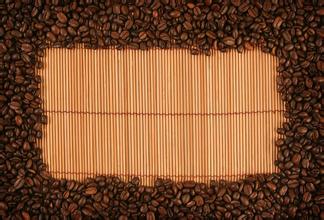Flavor description of Coffee Sidamo and Yega Chuefei Grinding Calibration step
Flavor description of Coffee Sidamo and Yega Chuefei Grinding Calibration step
In Ethiopia, Japanese beans are usually found, such as small stones or sticks, so special attention should be paid to grinding.
Sidamo has a balanced flavor and high sweetness, and its alcohol thickness is also higher than that of Yega Chuefei, especially in the process of sun-drying pulp fermentation, which is similar to the acidity and sweetness of red wine, coupled with the original cocoa bitterness of coffee. so that a batch of Sidamo will have the intoxicating flavor of alcoholic chocolate.
Sun Sidama coffee beans are usually marked with G4 exits, and most of the washed Sidamo coffee beans are exported at G2 level because the treatment process is better than the sun.
Yega Xuefei's coffee trees were planted by monks in Europe and later transferred to farmers or cooperatives. Yega Xuefei is actually constructed by surrounding coffee communities or cooperatives, generally including: Hafusha, Hama, Biloya
The phrase "coffee entrance, flowers in full bloom" is best described, just as flowers promote the comfort of taste buds and olfactory cells in the nasal cavity. In addition to the fragrance of flowers, the delicate thickness of body, like silk massage in the mouth, feels wonderful. At present, many coffee chemists begin to study the microclimate and soil and water around Yega Xuefei, in order to sum up the planting equation of fine coffee.
The mode of production in this area is very special, with its own farmland "garden coffee" (Garden Coffee) as the main. Each farmer grows coffee in their backyard or in a small field next to the village, while mixed cultivation includes pseudo-bananas, a drought-tolerant banana plant with roots as edible parts, and crops with various miscellaneous grains. This mode of production enables small farmers to use their farmland to produce food on their own. at the same time, they can also use the annual coffee harvest to earn additional income for the purchase of daily necessities, medical care, education and other resources.

Important Notice :
前街咖啡 FrontStreet Coffee has moved to new addredd:
FrontStreet Coffee Address: 315,Donghua East Road,GuangZhou
Tel:020 38364473
- Prev

Flavor description of Yejia Coffee Cochel washed Coffee beans A brief introduction to the area of planting Environment
Kochere Cochrane is located in the southwest of Ethiopia, about 25 miles to the north, that is, the famous Yega Chefen. The production model is mainly based on the local small rice to send the batches to the cooperative for unified processing. There are about 100,000 people in the village of Chalalacktu who eat coffee for a living, and related production activities have become their main source of economy. Due to the income from coffee production, the standard of living in the land is similar.
- Next

Description of planting environment and flavor of Guatemalan honey-treated coffee beans A brief introduction to the taste of grinding scale
Description of planting environment and flavor of coffee beans treated with Guatemalan honey A brief introduction to the taste of grinding scale 1 the light time of raw coffee beans treated with yellow honey was the longest. Longer light means higher heat, so the coffee can be dried within a week. In general, the drying time of coffee depends on the local climate, temperature and humidity. 2 Coffee raw beans treated with red honey
Related
- Detailed explanation of Jadeite planting Land in Panamanian Jadeite Manor introduction to the grading system of Jadeite competitive bidding, Red bid, Green bid and Rose Summer
- Story of Coffee planting in Brenka region of Costa Rica Stonehenge Manor anaerobic heavy honey treatment of flavor mouth
- What's on the barrel of Blue Mountain Coffee beans?
- Can American coffee also pull flowers? How to use hot American style to pull out a good-looking pattern?
- Can you make a cold extract with coffee beans? What is the right proportion for cold-extracted coffee formula?
- Indonesian PWN Gold Mandrine Coffee Origin Features Flavor How to Chong? Mandolin coffee is American.
- A brief introduction to the flavor characteristics of Brazilian yellow bourbon coffee beans
- What is the effect of different water quality on the flavor of cold-extracted coffee? What kind of water is best for brewing coffee?
- Why do you think of Rose Summer whenever you mention Panamanian coffee?
- Introduction to the characteristics of authentic blue mountain coffee bean producing areas? What is the CIB Coffee Authority in Jamaica?

